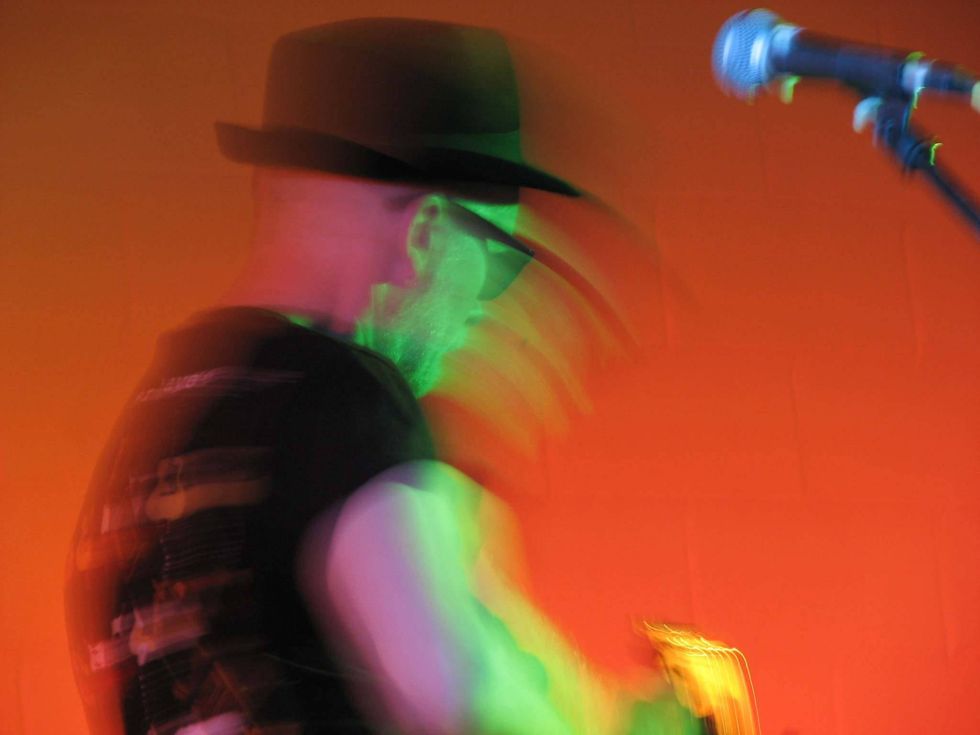I'm writing this month's column from my hotel room in Aarhus, Denmark, the home of TC Electronic. TC flew me over for a week to make some videos, mainly showcasing the new iOS and computer editor for their TonePrint series of effects pedals. It occurred to me that the traditional lines are getting blurred between guitar-effects pedals, multi-effects units, plug-ins, and amplifiers. There's an interesting trend happening—a melding of all the best and most user-friendly features of hardware effects and amps, and software apps and programs. Let's take a look at where this is all headed.
Line 6 Helix Floor, Helix Rack, and Helix Native. As far as I know, the Helix is the first hardware effects/modeling unit that can also be used as a plug-in within a DAW, with no hardware necessary other than your computer and audio interface. That's some serious flexibility. I'm a big fan of computer editors for full-featured, sophisticated hardware units like the Helix and Fractal Audio Axe-Fx. They make navigating these deep processors so much easier. It essentially feels like you are working with a plug-in when you're using a computer editor to control a hardware processor. Being able to eliminate the hardware when tracking parts or practicing with a computer just makes things more streamlined overall. And when you need to use the hardware for performing live, simply transfer your presets and you're good to go. Cool!
TC Electronic TonePrint Pedals. TC's TonePrint pedals have been out for a few years now. Offering great tone and ease of use, they provide deep editing capability through a recently updated software editor that connects to the pedal via USB. There's also the ability to upload presets (“TonePrints") into the pedals via an app.
Find the TonePrint you want to try, hold your phone up to your guitar pickup, push play on the app, and the TonePrint is “beamed" into the pedal. Just like that, you can instantly have, for example, Andy Summers' signature chorus in your pedal.
Working with the new TC TonePrint software editor also feels like working with a plug-in in a DAW. It's easy to forget you are controlling a stompbox! The line is blurred between software and hardware, and there's myriad parameters and tweakability on tap for the creative guitarist to explore.
UA OX Amp Top Box, Two Notes Torpedo. Two Notes Audio Engineering have been making their high-quality Torpedo load boxes for a while now. Universal Audio recently got into the game as well with their OX Amp Top Box. These units allow you to safely load down a tube amp to line level, and then add tone-shaping effects and impulse responses for speaker-cabinet and mic emulation. I call this approach “modeling the back end." This is a great middle-ground approach for guitarists who love traditional-style rigs but would still like to take advantage of some modern tech. You can use your favorite tube amps—with pedals or rack effects if you wish—to generate your core tones, and then use the modern tech to eliminate things like microphones and loud, heavy speaker cabinets.
Both the Torpedo and OX units use an accompanying software application for creating, editing, and saving tones. And, once again, I feel the line is blurred between the analog and digital world when using the software. It's pretty remarkable that you can get a 100-watt tube amp cooking full bore and craft tones in your apartment studio by using headphones! Add some compression and/or EQ, virtually move the mics on the cabinet, and dial up a perfect reverb. It's all so easy, quick, and elegant.
What's next? I wonder where we'll be in 10 years time? Personally, I'm excited to see manufacturers move tube amps into the future by incorporating some of the things I've talked about into them. Effects units will likely get more capable, powerful, and compact. We will probably see more gear that can operate natively within a computer and alternately as hardware when needed. It's truly an exciting time to be a guitarist.
Until next month, I wish you great tone.




















